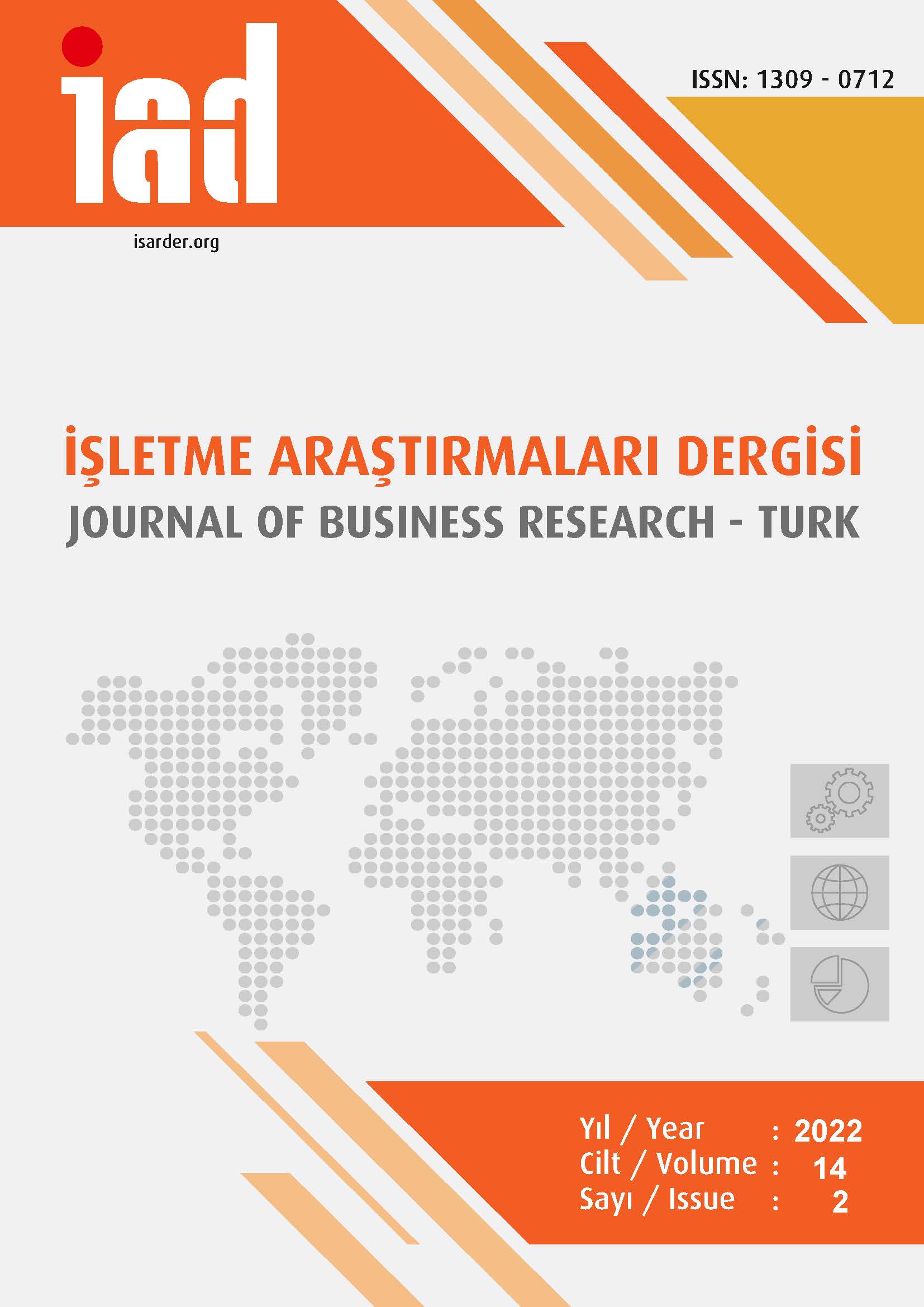Kısa Vadeli Borçlanmanın Aktif Karlılığı Üzerindeki Etkisi: BIST Sınai Endeksi Örneği
Anahtar Kelimeler:
BIST- Kısa Vadeli Borçlanma- Aktif KarlılıkÖzet
Amaç – Günümüz küresel rekabet ortamında işletmelerin varlıklarını etkin kullanmaları ve bu varlıkların yönetilmesi önem arz etmektedir. Yabancı kaynaklar ve özkaynaklar olarak varlık finansmanı için kullanılan bu kaynaklar da işletme karlılığını etkilemektedir. Bu bağlamda çalışmanın amacı kısa vadeli borçlanmanın aktif karlılığı üzerindeki etkisini tespit etmektir. Yöntem – Çalışmada 2009-2020 yılları arasında kesintisiz olarak Borsa İstanbul Sınai Endeksi’nde (BIST-XUSIN) faaliyet gösteren 96 firmanın verilerinden yararlanılmıştır. Ampirik analizlerde Im, Pesaran & Shin (IPS) birim kök testi, LM (Lagrange Multiplier) ve CD (Cross Section Dependent) yatay kesit bağımlığı ve SUR tahmincisi (Seemingly Unrelated Regressions-SUR) yöntemleri kullanılmıştır. Bulgular – Geliştirilen modeller sonucunda imalat sanayi firmaları açısından kısa vadeli borçlanma ile aktif karlılığı arasında negatif bir ilişki tespit edilmiştir. Tartışma – Borsa İstanbul (BIST) sınai endeksinde faaliyet gösteren firmaların kısa vadeli borçlanma şekilleri aktif karlılıklarını etkilemektedir. Söz konusu firmalar özellikle toplam kaynaklar içerisindeki kısa vadeli borç oranını optimum seviyede tutarak karlılığını artırabilirler. Ayrıca BIST sınai endeksindeki firmalar alacakların tahsilatını daha etkin bir şekilde yönetmesi ve optimum sermaye yapısına ulaşması aktif karlılığının artmasına yardımcı olacaktır.
İndir
Yayınlanmış
Nasıl Atıf Yapılır
Sayı
Bölüm
Lisans

Bu çalışma Creative Commons Attribution-NoDerivatives 4.0 International License ile lisanslanmıştır.





